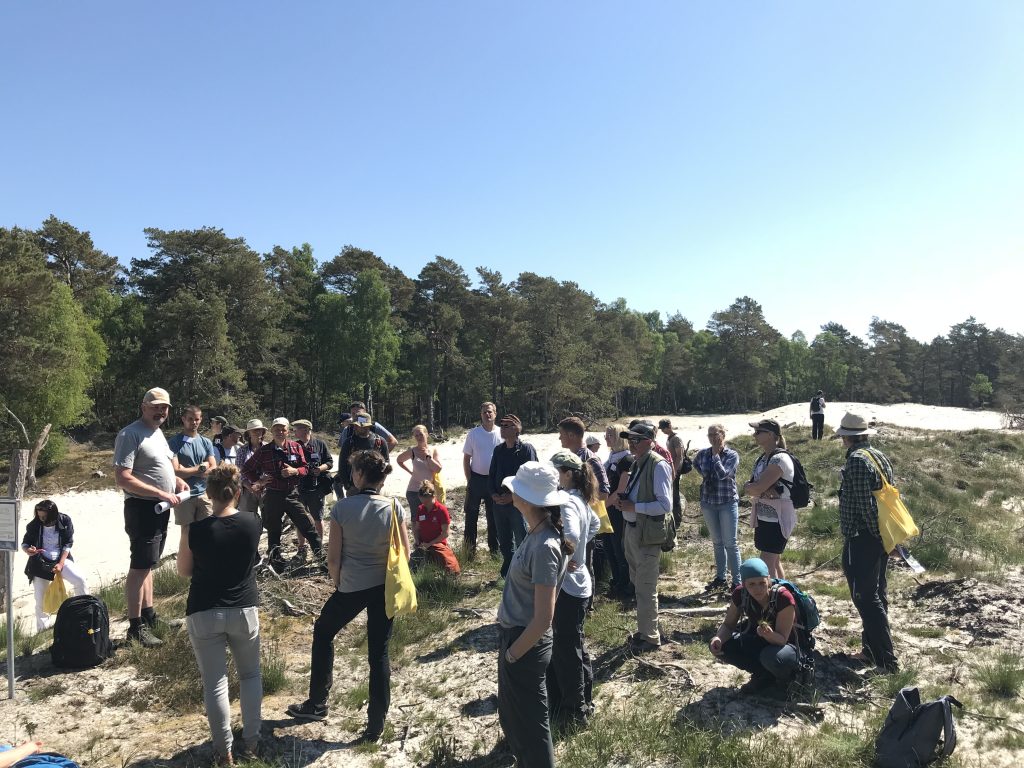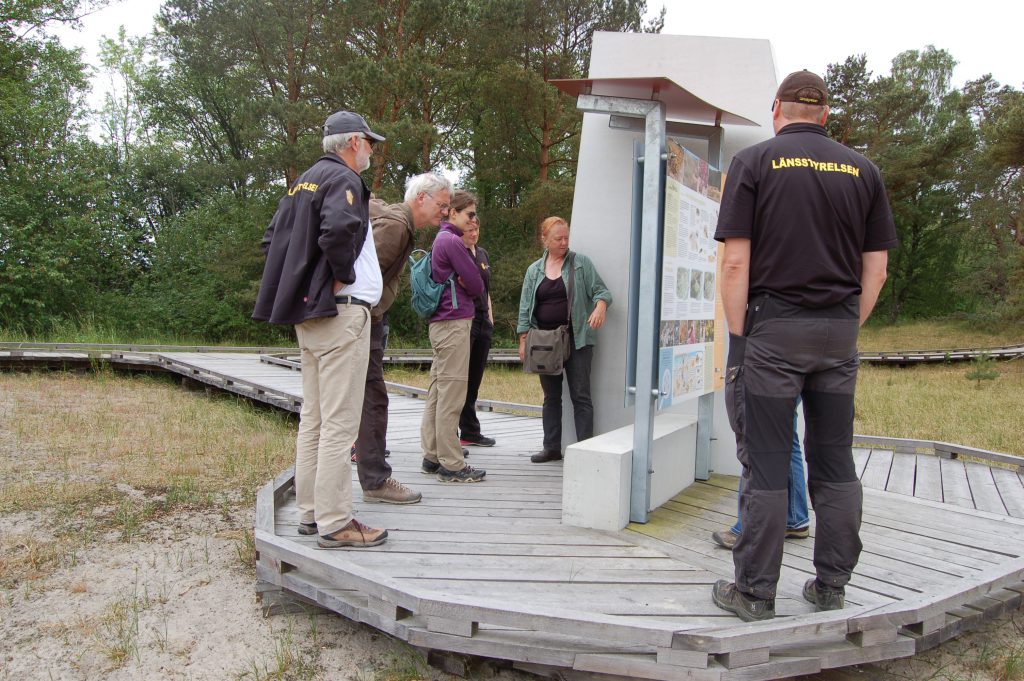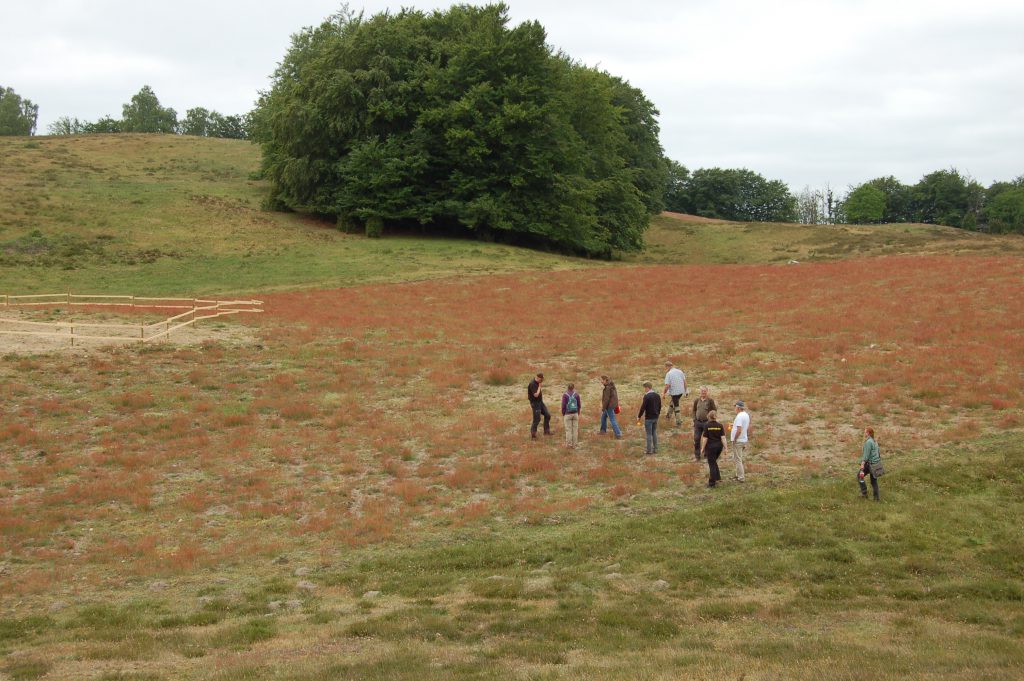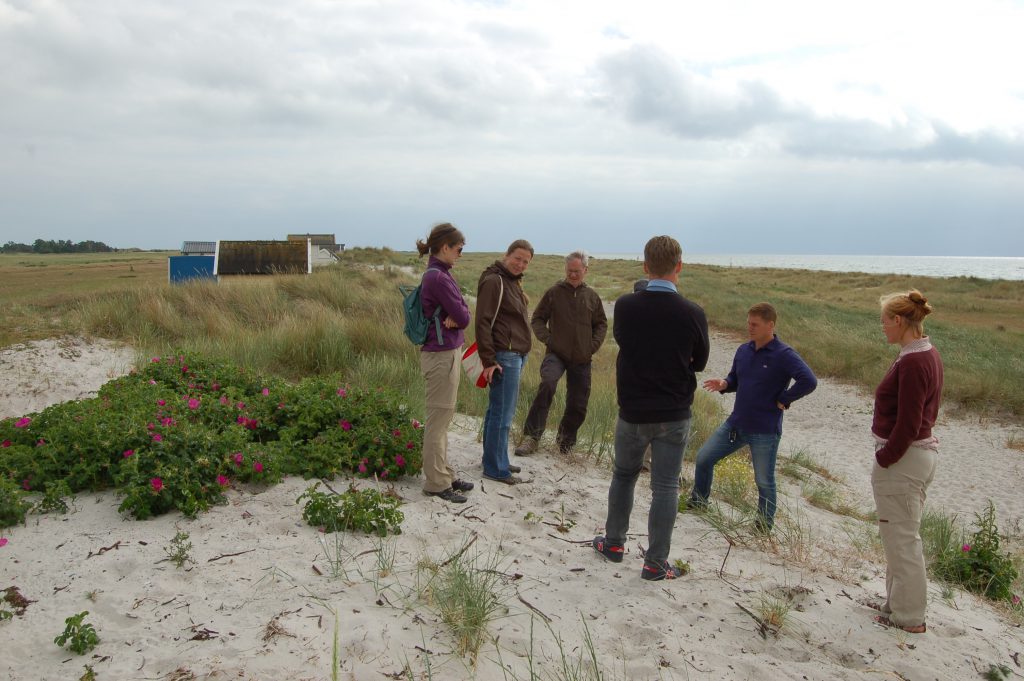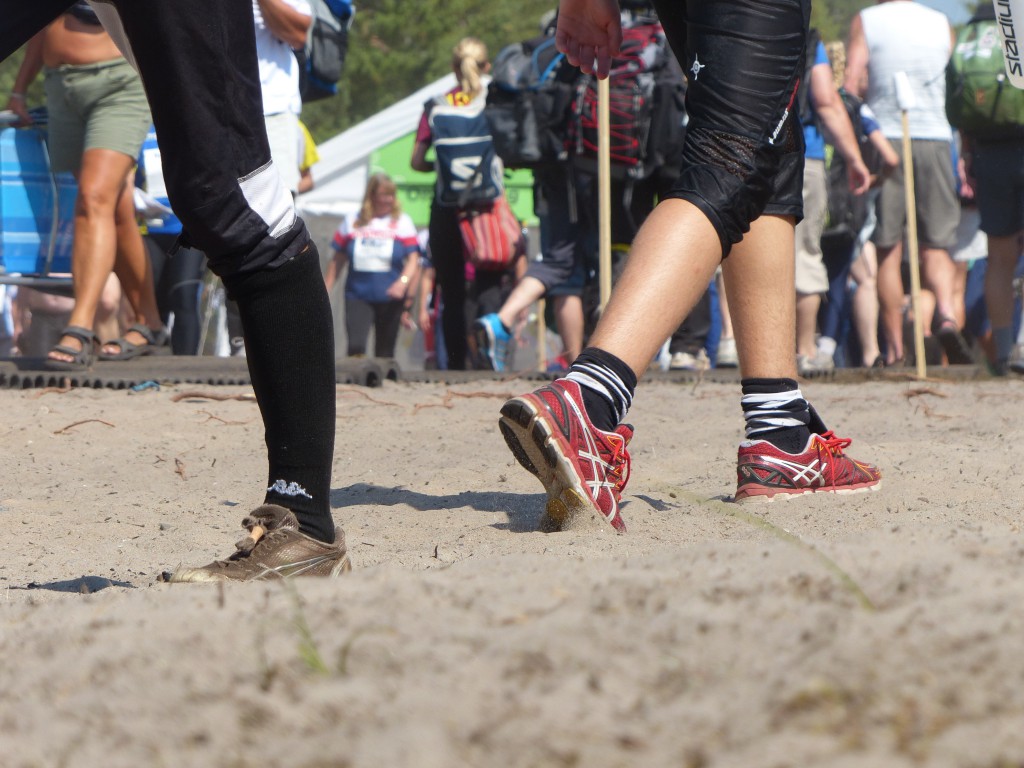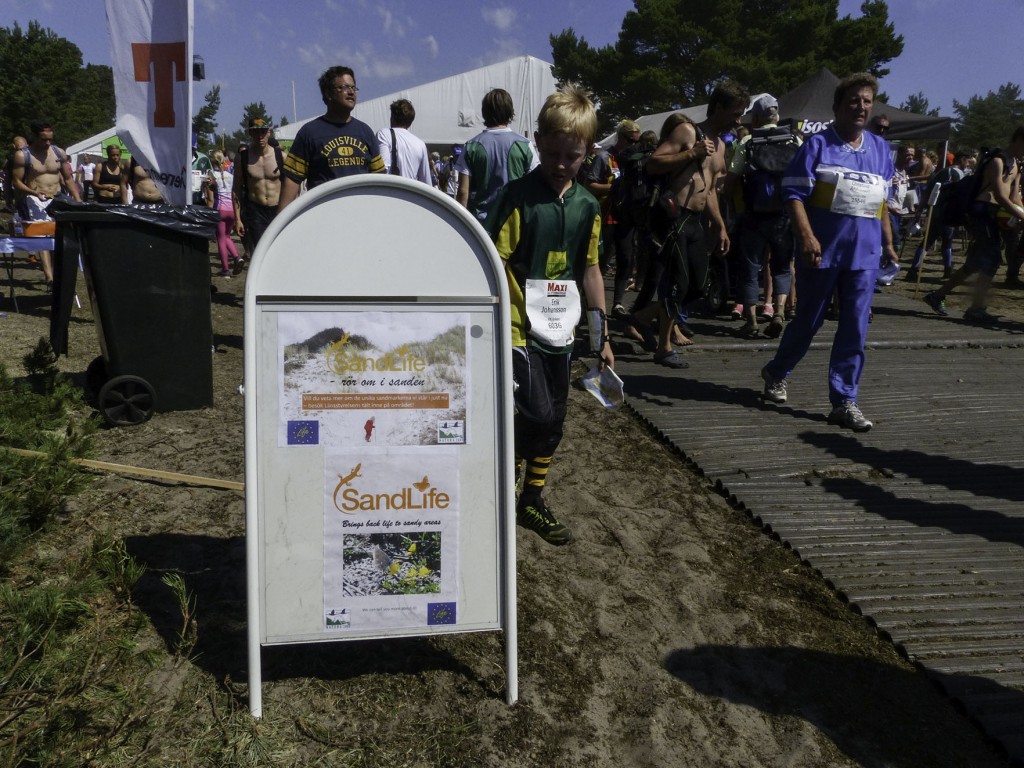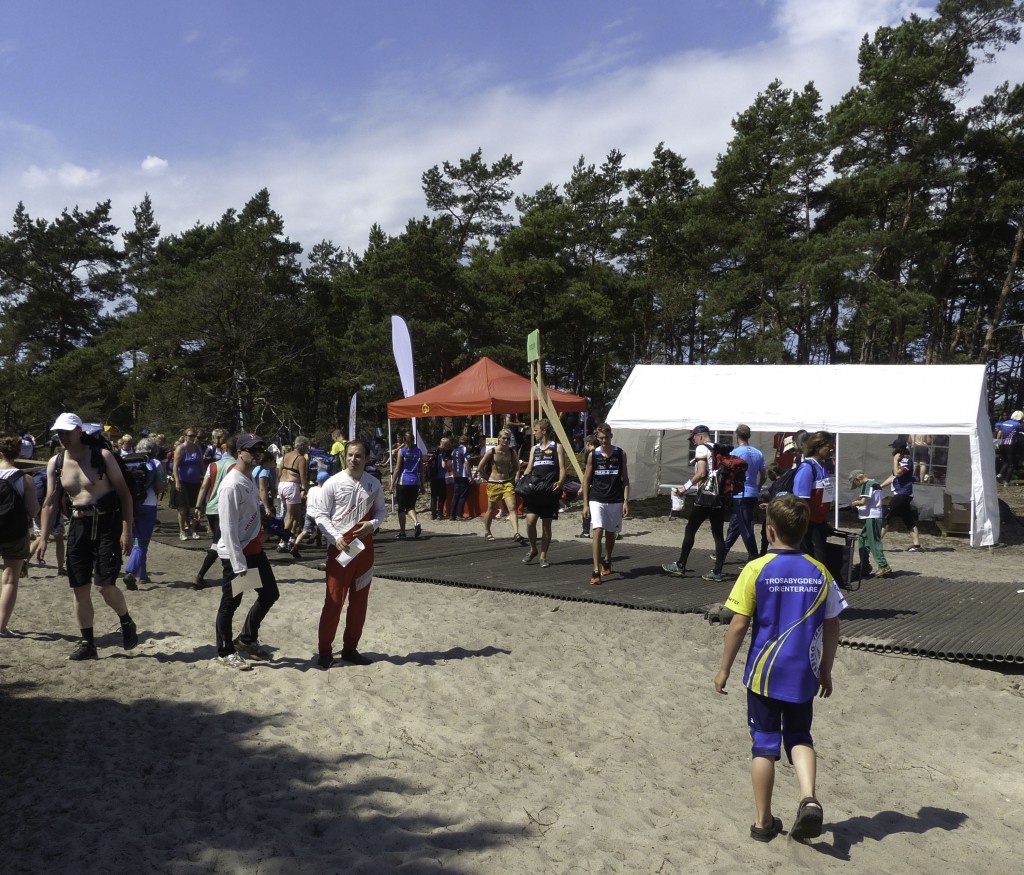During the project’s final conference, a management manual was released on how sandy habitats can be restored and maintained. In the manual “Restoration and Management of Sandy Habitats in Southern Sweden” you can learn from the experience of Sand Life.
Category Archives: Okategoriserade
The Final Conference in Sand Life
The sun shines over the project’s final conference held in Kristianstad 22-24 May. During three successful days, everything that was carried out within the project was presented and what effects it had on the species and sandy habitats. Experts were in place and gave their views on the sandy fields and the need for care and international guests told us what is going on in the sandy fields in the rest of Europe.
Those who want to know more about what is being raised during the conference can see all the presentations here.
Actions in action
Now the actions of restoring the sand dunes have speeded up along the coast of the Natura 2000-site Laholmsbuktens sanddynsreservat in southern Halland. If you follow the link below, you can see a small cut scene of how a caterpillar creates patches of bare sand. To remove encroachment, Japanesee roses and mountain pine we sometimes need to take the help of powerful machines. All root parts must be removed so that the bare sand will be keept open for a longer period of time. This is one of the measures we have in the project Sand Life, whose goal is to rebuild parts of the former open sandy soils with a mosaic of flowering herbs and sun-exposed patches of bare sand .
Here you can find a link to the film about the active creation of sand patches.
The European Commission visits Sand Life
For two days in June 2016 Sand Life was visited by the technical officer Ana Klenovsek at the European Commission and the external monitor Inga Racinska. The purpose of the visit was to see how the project progress and we took the opportunity to show some of the major restorations to the visitors. The first stop was at the pre-restored Gropahålet where mountain pines have been felled to make way for large clearings with brilliant white sand. Information boards and the outdoor museum at Friseboda with a ramp for disabled visitors. In the hilly landscape at Drakamöllan, the 3 hectares ploughed grasslands were showed, as well as the prescribed burnings of heather and newly created sand patches. At the Falsterbo peninsula in the southwest of the county of Skåne, we visited the sandy reefs outside Falsterbo where 6.3 hectares hvae been cleared from Japanese rose (Rosa rugosa), and where the difficulty of removing an alien and invasive species were discussed. Finally the 20 hectares of cleared overgrowth of birch at Falsterbo firing range was shown, together with one of the project’s newest outdoor museum. During day two, the European Commission’s financial officer Tommy Sejersen and the external auditor Peter Mecko to discuss the project’s financial progress.
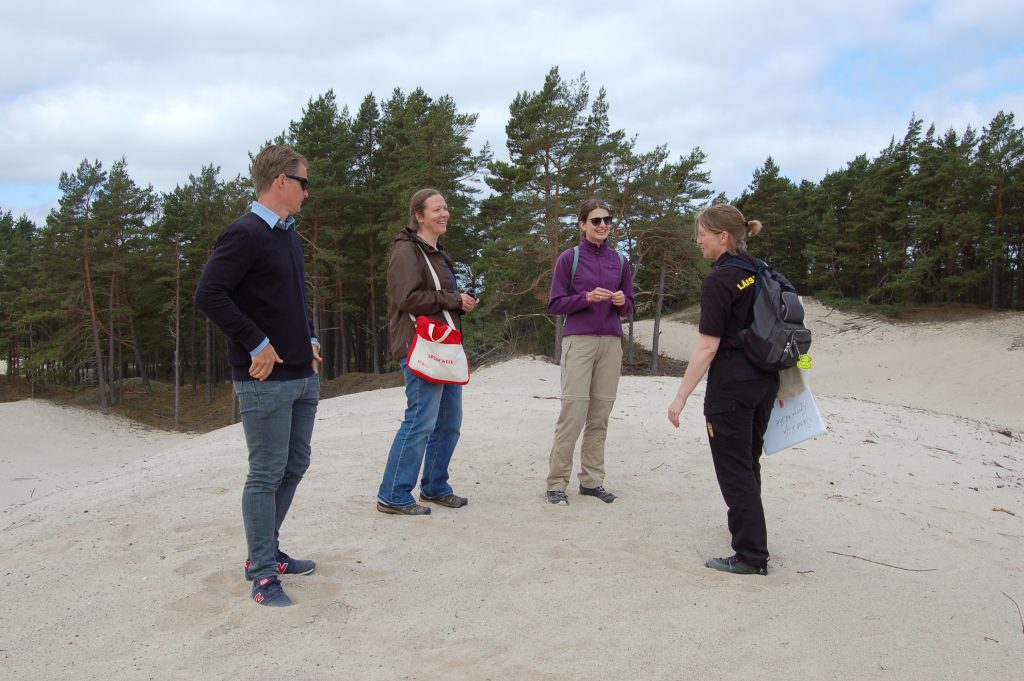
Marit Hedlund shows the sandy gaps in the wooded sand dunes of Gropahålet to the European Commission.
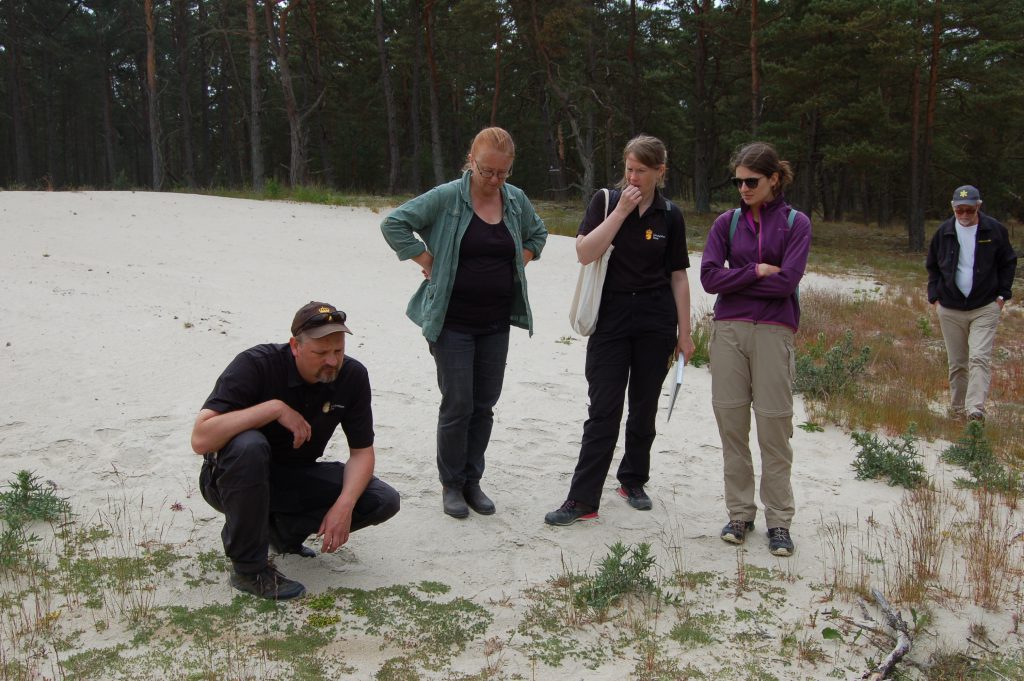
Already during the second growth season, the wild thymes (Thymus serpyllum) has colonized the edges in one of the newly created sand patches at Gropahålet.
Orienteering helps Sand Life in Friseboda
Sand Life was present when one of the largest orienteering festivals in the world, O-ringen, was held in the nature reserve Friseboda. During a hot and sunny day more than 20,000 orienteers ran in the sanddunes and helped us fight encroachment by stirring up the sand.
On July the 22th in 2014 the world largest orienteering competition, O-ringen, had one of its location at Friseboda, one of the project sites of Sand Life. We set up our tent with information about the project close to the starting point and the whole day, we talked about Sand Life, the area’s unique natural beauty, and the species that live here — from the rare Tawny pipit on the sandy heaths to the small antlions in their sunlit holes in the gaps of the pine forest. At the same time we talked about the need of restoration actions and many of the visitors were happy to know that the event was not harmful to the nature but in fact, the running of thousands of feet helped us in our restoration work.
Maria Sandell, regional project manager, had many opportunities to talk about why the dense mountain pine plantations had been taken down in the area and the need for more of the open, sunlit surfaces. The goal of our restoration work is an area which include many different habitats – from the dense pine forest, the more open wooded dune with sunlit gaps as well as open sandy heaths.
During the winter two major mountain pine plantations have been removed, one which was situated close to Arena area. We had made arrangements with O-ringen to wait with removal of some of the mountain pine plantation to give orienteers a really tricky area and there were many people who had trouble finding the controls in the dense mountain pine. In the winter of 2014/2015, we will continue to remove the mountain pine plantations.

